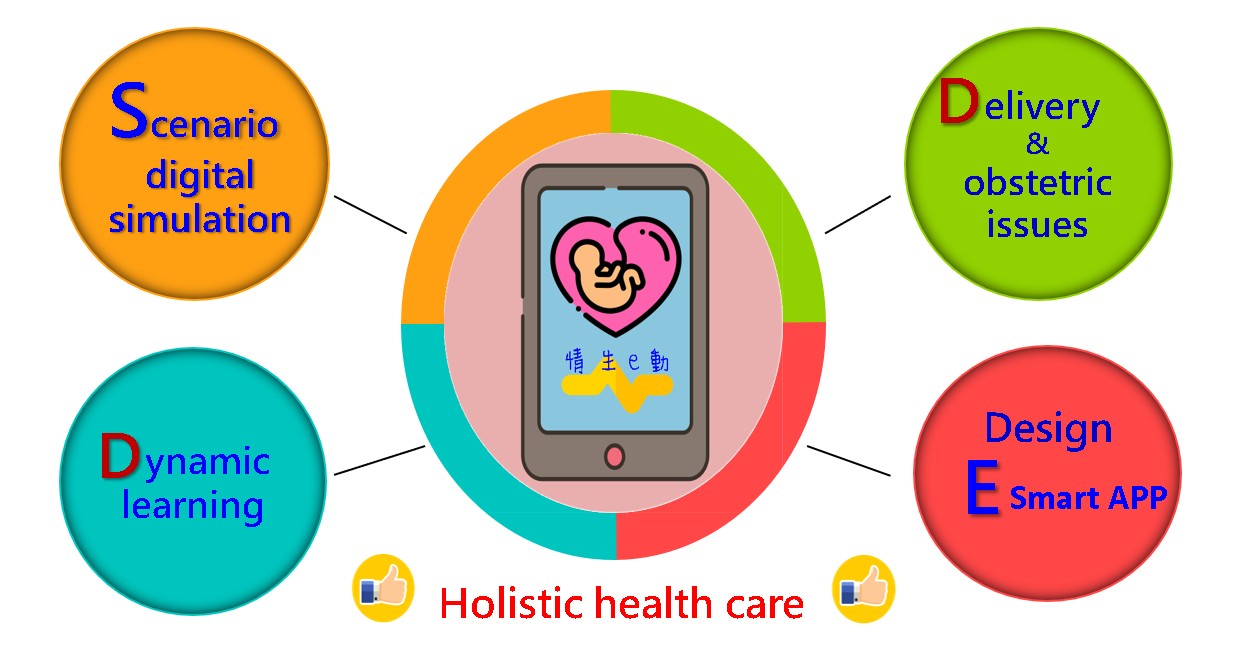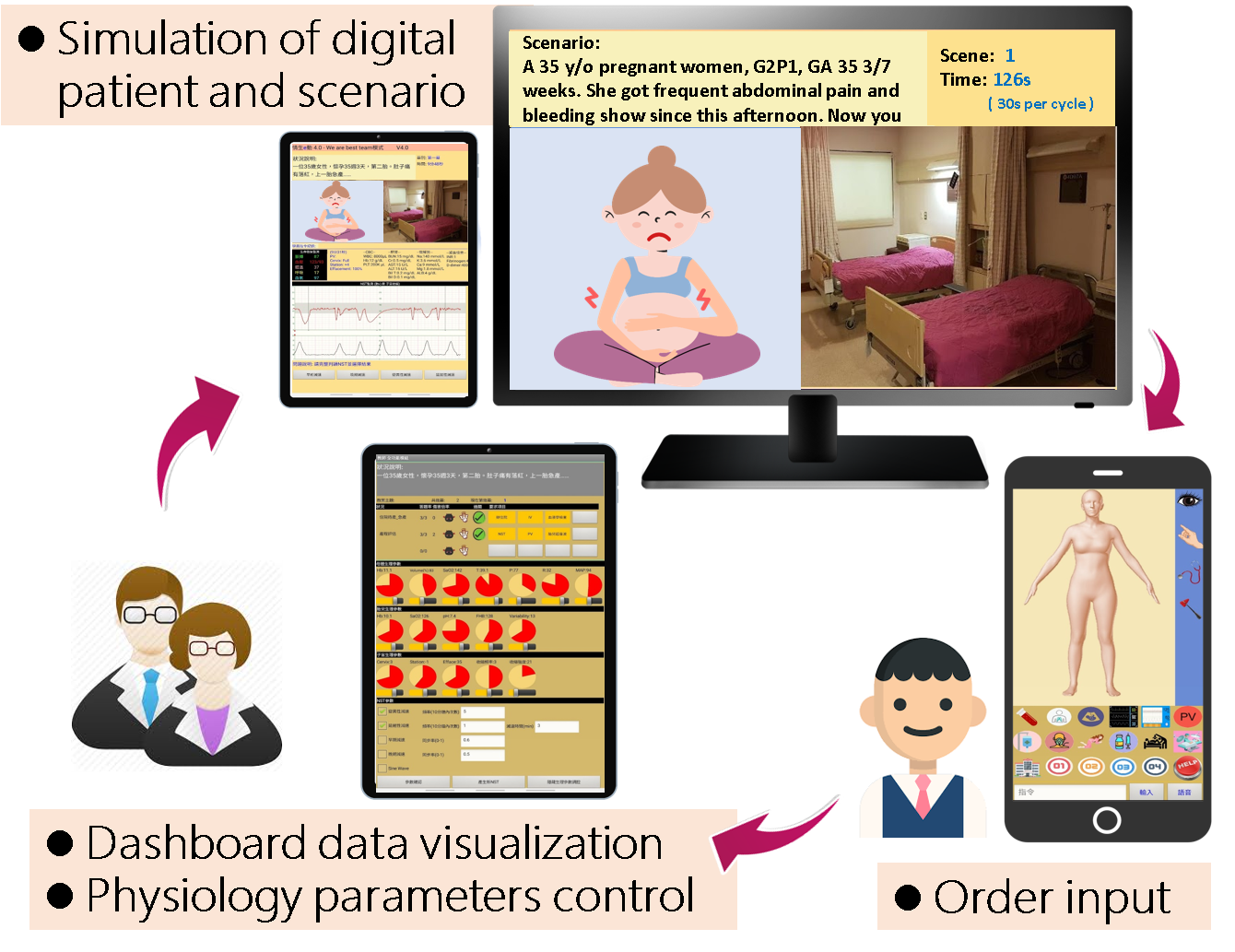Use of E-mobile-innovative smart teaching APP in obstetric scenario teaching
Po-Fan Chen, MD, Dept. of Obstetrics & Gynecology
Maternal and child safety are one of the 2022-2023 patient safety goals of the Ministry of Health and Welfare. However, the complexity of obstetric diseases and its rapidly changing characteristics pose a big challenge to medical staff. How to improve the education and training of medical staff is an important topic.
Therefore, we created a simulation scenario teaching APP system together with the head nurse Yu-ting Tien and deputy head nurse Hsuan-ying Chen of the delivery ward, and the team’s creativity and information design were used to complete digital simulation of patients, simulation teaching tools (digital fetal monitor generation), student digital interaction model design, teacher device control model, and student independent training functions. Through physiological design of digital patient simulation, real-life vital signs, physiological data and status could be presented and responses can be generated based on the commands of the students. For fetal heart beat monitoring images, which are extremely important in the clinic, we developed digital automatic algorithms that generate the required high-fidelity images that can be combined with simulated patients for training. At the student end, commands for all examinations, management, drugs, fluid infusion, and blood transfusion that can be performed clinically can be inputted using the APP and the system will display the corresponding real-life images such as drug images, fluid or blood infusion images, and ultrasound images to improve the clinical familiarity of students and overcome traditional course training. Teachers can use the dashboard to obtain important physiological data from simulated patients and case progress and use digitalization to become patients. The simulated patient can be used to express common chief complaints or talk to improve interactivity and fun.
Innovative scenario simulation training can allow students and newly employed medical staff to quickly learn and familiarize themselves with possible clinical scenarios and challenges. We believe that digitalization and simulation is the start of innovative teaching. In the future, introduction of information technology and creativity can further improve medical services.

Figure 1. Design concept of teaching system

Figure 2. Operational framework of simulation teaching and training system
